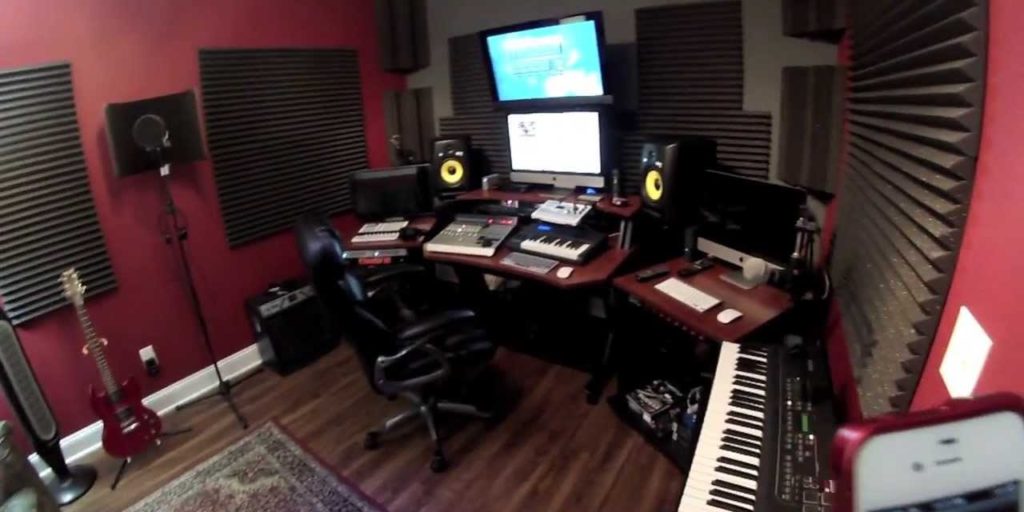By T. Perry Bowers
You might wonder why I would help people to start their own home studio when I am in the recording business?
 Well there are two reasons. Firstly, home studios aren’t really my competition. They can only do so much. They don’t have enough quality microphones to record a drum set properly. They most likely won’t have spent the three thousand dollars required for a vocal microphone or another four thousand dollars for pre-amps and compressors like we have in our professional studio. So, we will always have an edge over home studios in that regard. The second reason is it makes it easier for me to interface with people who have a little bit of knowledge of the recording process. They know which software works with other software and how long editing takes. They also understand how long it takes to set up and tear down. When they do need a professional studio, people with their own home studios are great clients with a sophistication that helps us both make a quality record. So home studios actually help me in a lot of ways.
Well there are two reasons. Firstly, home studios aren’t really my competition. They can only do so much. They don’t have enough quality microphones to record a drum set properly. They most likely won’t have spent the three thousand dollars required for a vocal microphone or another four thousand dollars for pre-amps and compressors like we have in our professional studio. So, we will always have an edge over home studios in that regard. The second reason is it makes it easier for me to interface with people who have a little bit of knowledge of the recording process. They know which software works with other software and how long editing takes. They also understand how long it takes to set up and tear down. When they do need a professional studio, people with their own home studios are great clients with a sophistication that helps us both make a quality record. So home studios actually help me in a lot of ways.
That’s why I encourage folks to build their own home studios. Here’s how to get started:
One of the first things you’ll need to decide is whether you are going to try to record drums in your home studio. If the answer is yes, you’ve doubled the cost and the time it will take to make it happen. You’ll need mics for the snare, the kick drum, at least three toms, the hi-hat and two for overheads. I usually use two mics on the kick drum and two mics on the snare. I also put at least one mic in the drum room for ambient sound.
Then you need to decide if you want to build a separate room for your recording area or if you’re going to record and perform in the same room. If you’re going for two rooms, you’ll need to insulate and install a window between the control room and the performance area. In either scenario, you need to treat the rooms acoustically with sound baffles and diffusers.
If you’re monitoring and recording in the same room, you need good headphones so you can still hear the mix as the drummer is banging away. Isolation headphones keep the live performance sound out of the headphones. They need to be fairly loud so you can get the mix up above the drums or guitar rigs blaring in the same room. Be careful of your ears. They are your most precious commodity as a sound engineer.
Often bands build home studios solely to record their own projects but you may also want to open it up to record outside clients. If so, there are a lot of things to consider. If you have a family, bringing in outside clients is tricky. Unless you want every Tom, Dick and Harry knowing where you live and where you keep your precious gear, you’ll have to vet your clients before they even step into your studio. Recording artists can be shady characters.
You’ll also need to set some standards for your clients. I recommend you create a website with a contact form. You can ask potential clients basic questions to figure out where they are on their musical journey. Always ask for a link to their website, facebook or twitter. It gives you a glimpse into their world before you invite them into yours. If they call you on the phone ask them to fill in the contact form before coming into the studio. If they have any level of sophistication at all it won’t be a problem. If they can’t find a computer or phone to manage this basic level of interfacing, you might rule them out on that fact alone.
Do your research on pricing. Look at the studios in your area and consider the amount of gear, facility and expertise they have compared to yours. From that you can make a price determination. There are a lot of studios out there. When people call you for studio time, they will be speaking with many studios so consider how you will stand out on the phone. Ensure you can justify your pricing compared to other studios.
When people call me about my studio I always ask them if they would like to take a tour. That way I can meet them. I can tell if they are professional and they can look at what I have to offer. They can put money down on a session if they like it and there are no surprises when they show up for their session. It’s a little more complicated for people running home studios because of the privacy factor, but if you feel they aren’t going to rob you blind or hurt you, invite them for a tour.
Collecting money is an interesting process. You’ll have to find your own style. My style is the direct approach. I require one hundred percent up front. If they can’t do it, there is no session. No excuses and no reasons will persuade me otherwise. I apply the rule across the board to friends, family, rockers and rappers alike. I won’t go into detail here, but you can check out my article on collecting money here: link.
Even if you decide not to collect all of the money up front, get a deposit before booking a session. Make it clear to the clients this is non-refundable. So if they don’t show up for their session their deposit disappears. Also, tell them the session starts at the agreed scheduled time, not when they show up. But get ready to wait for people to show up. Musicians, by in large, are not known for their promptness.
There are so many facets to running a studio – it’s suffice to say starting a home studio will be an interesting journey. It will teach you many things about running a business. It will help you get your recording chops up and hopefully thicken your skin a little. If you survive, you will be one of an elite few. So go on, put on your big person pants and go get ‘em!

